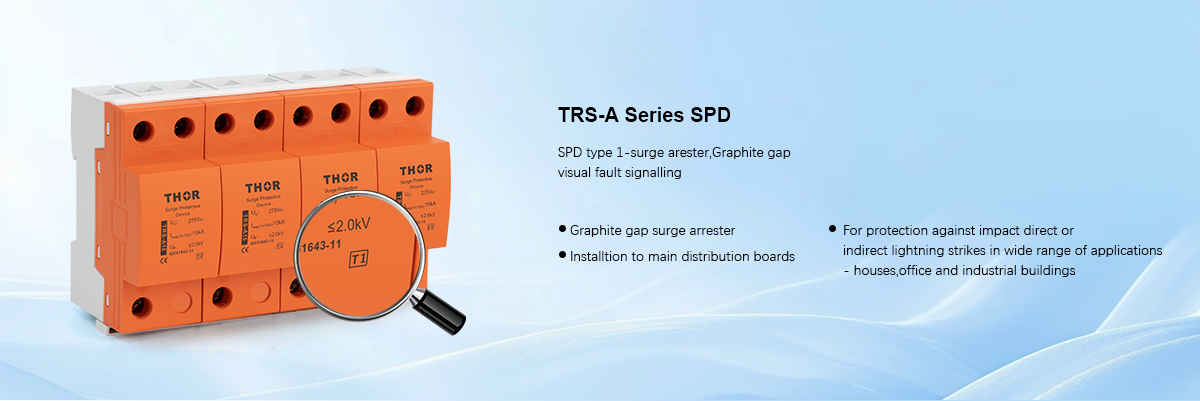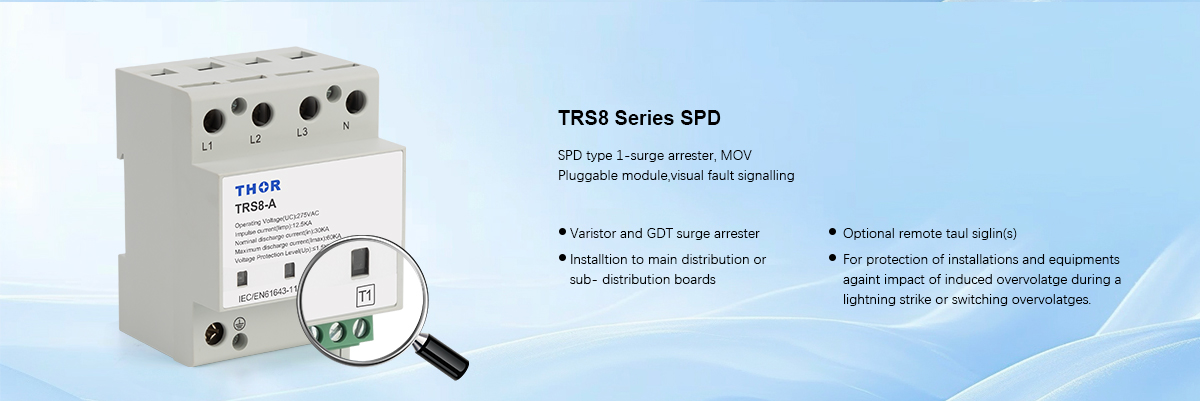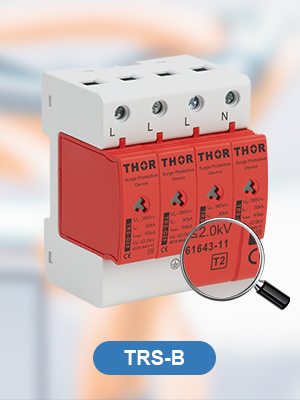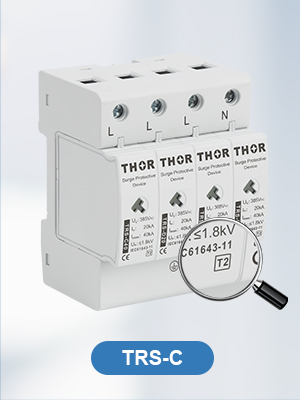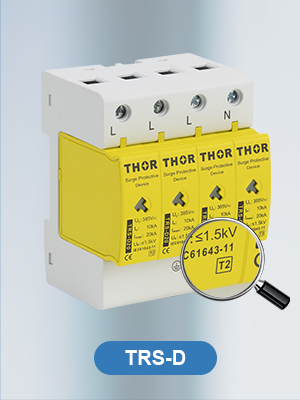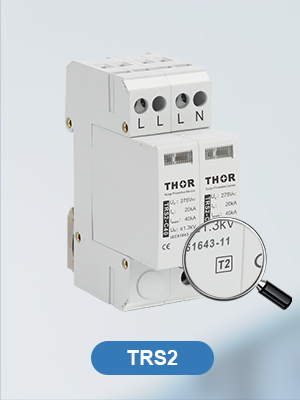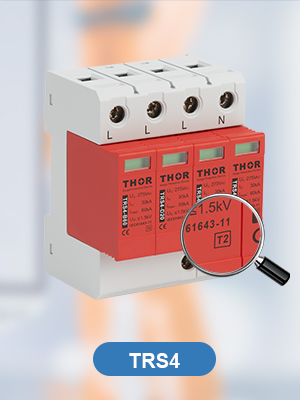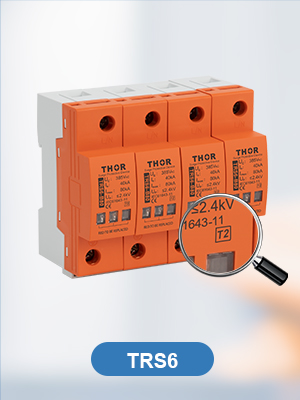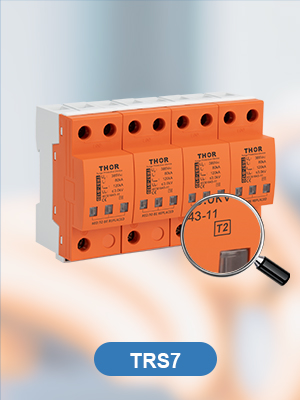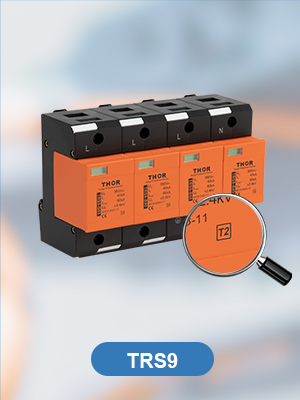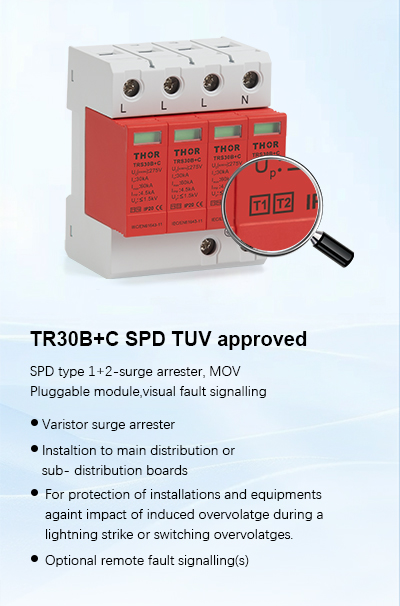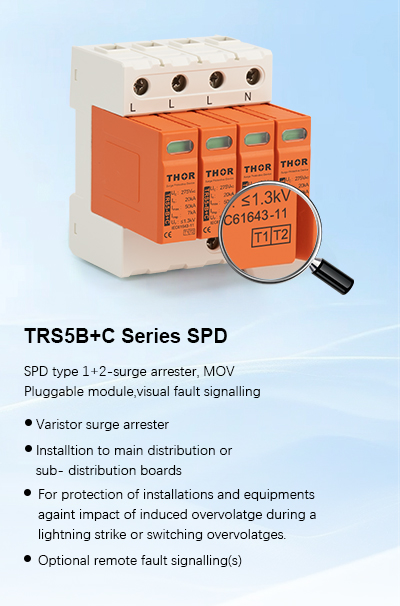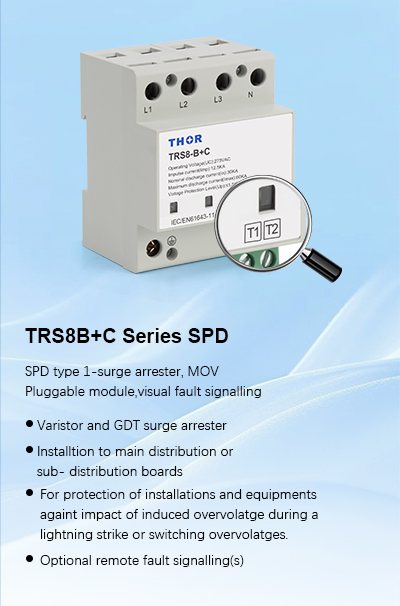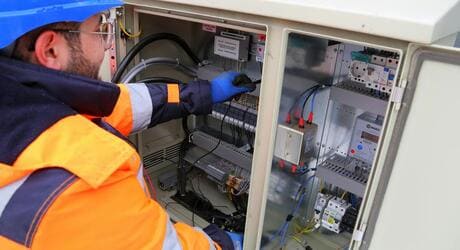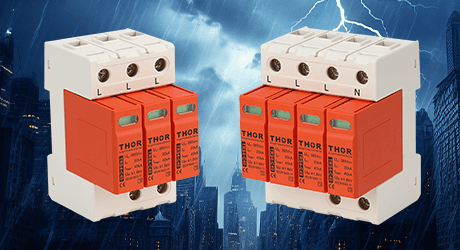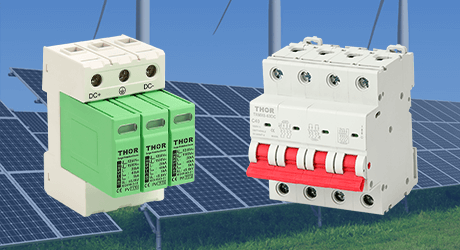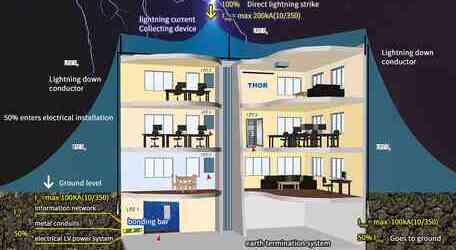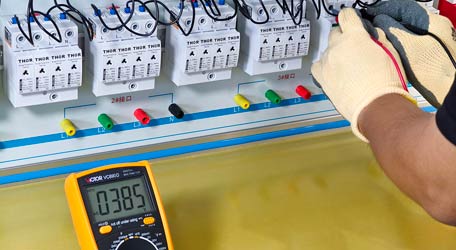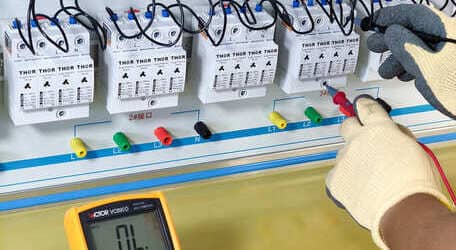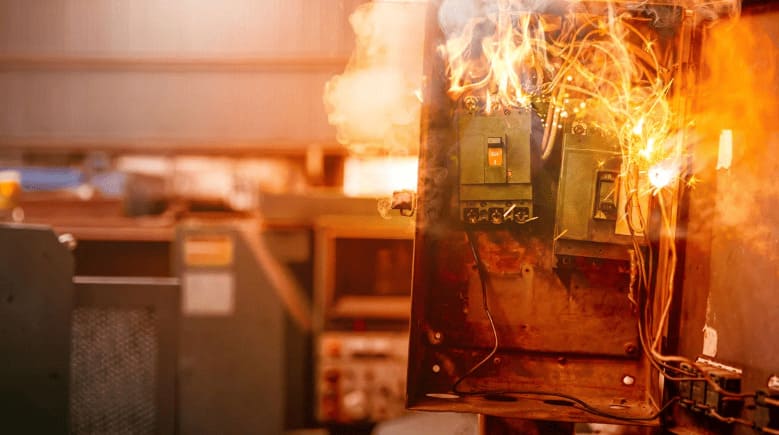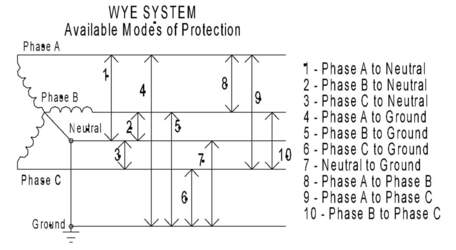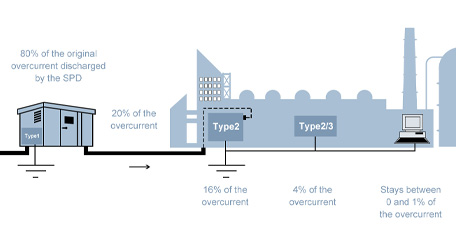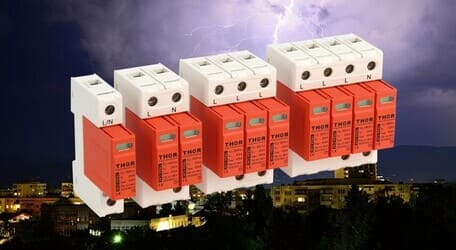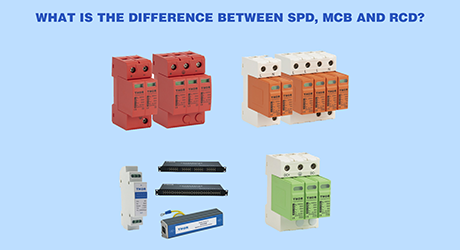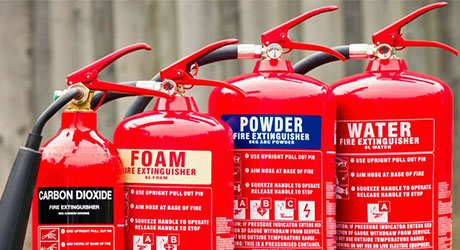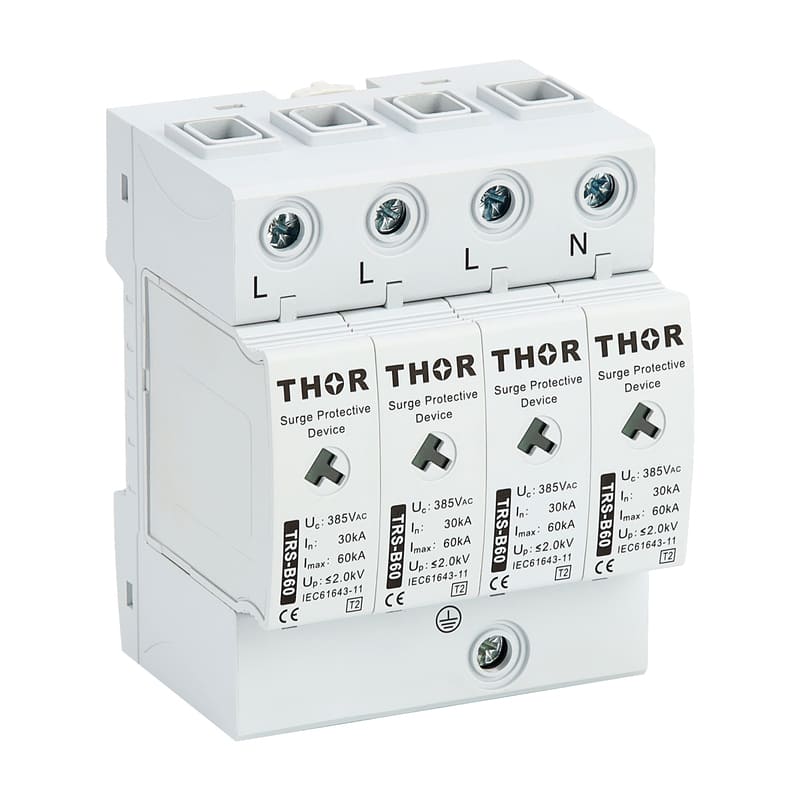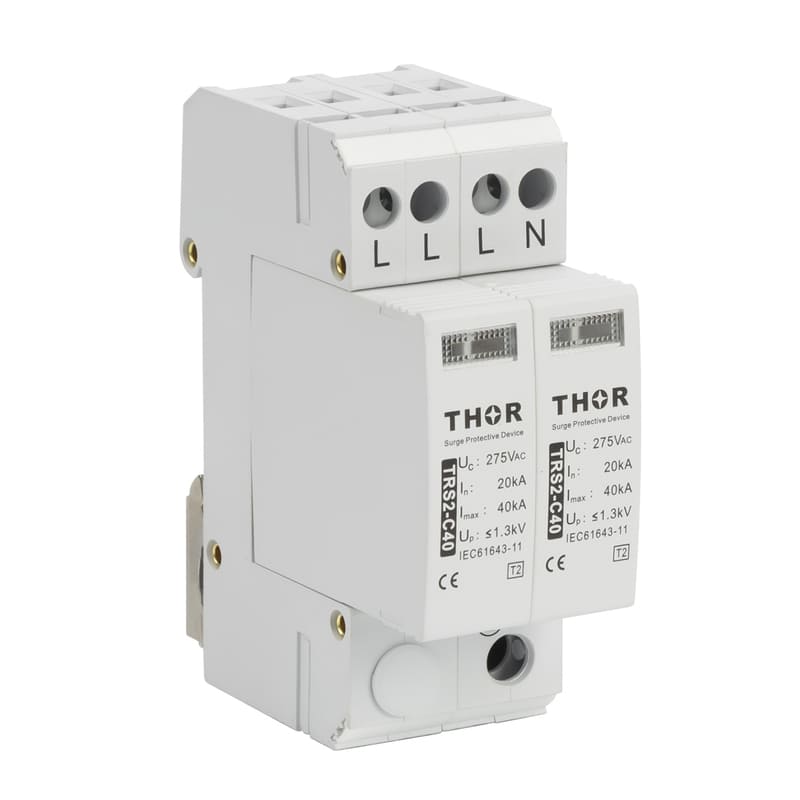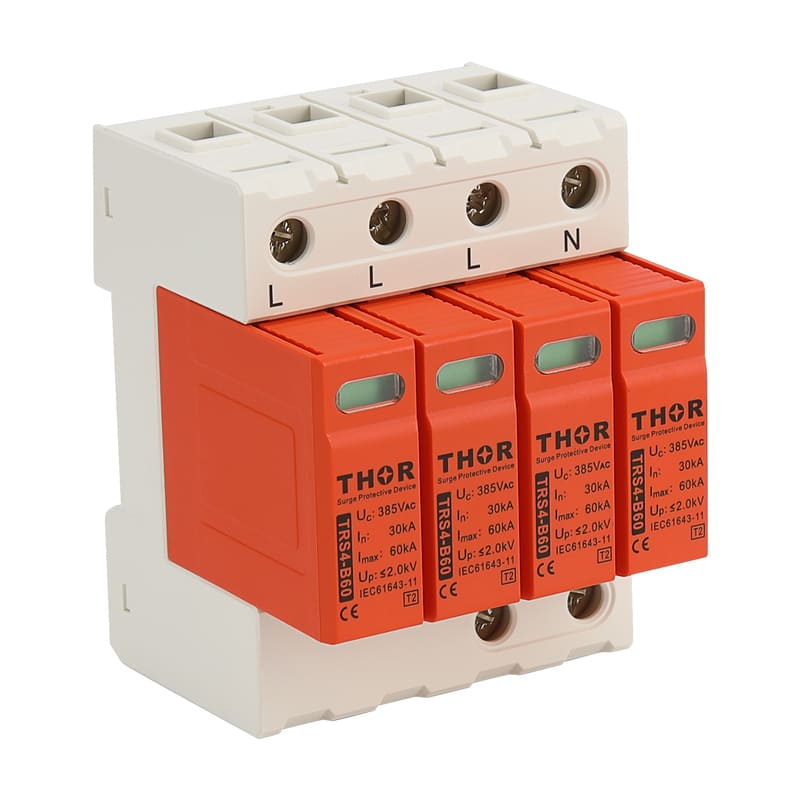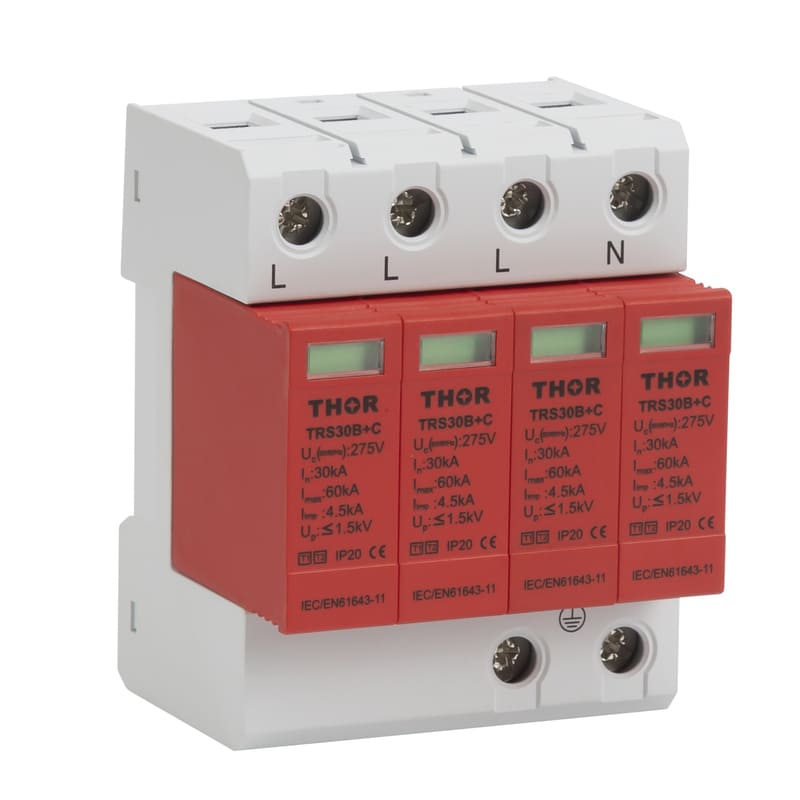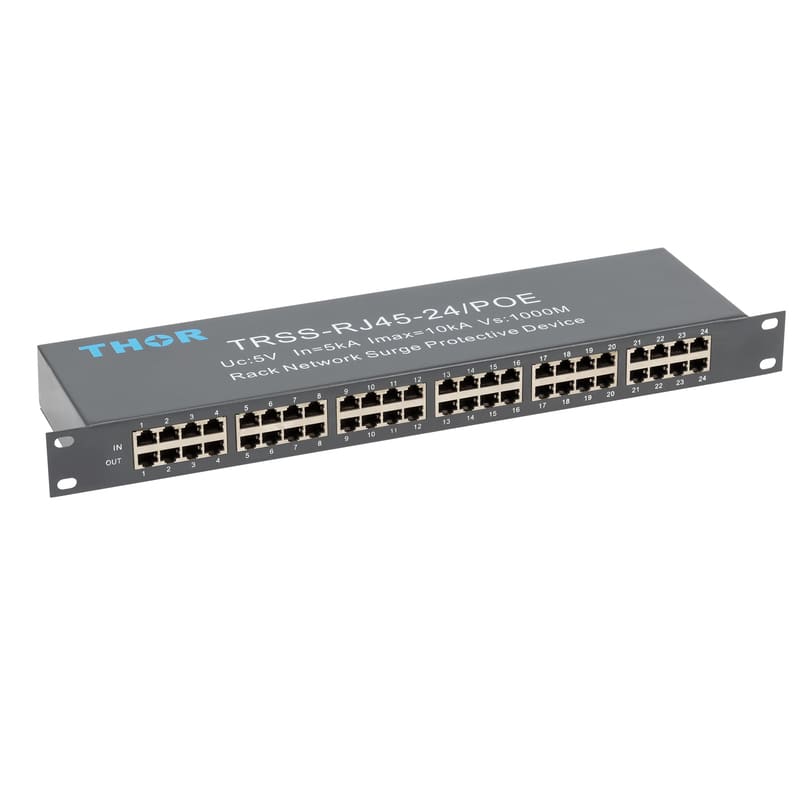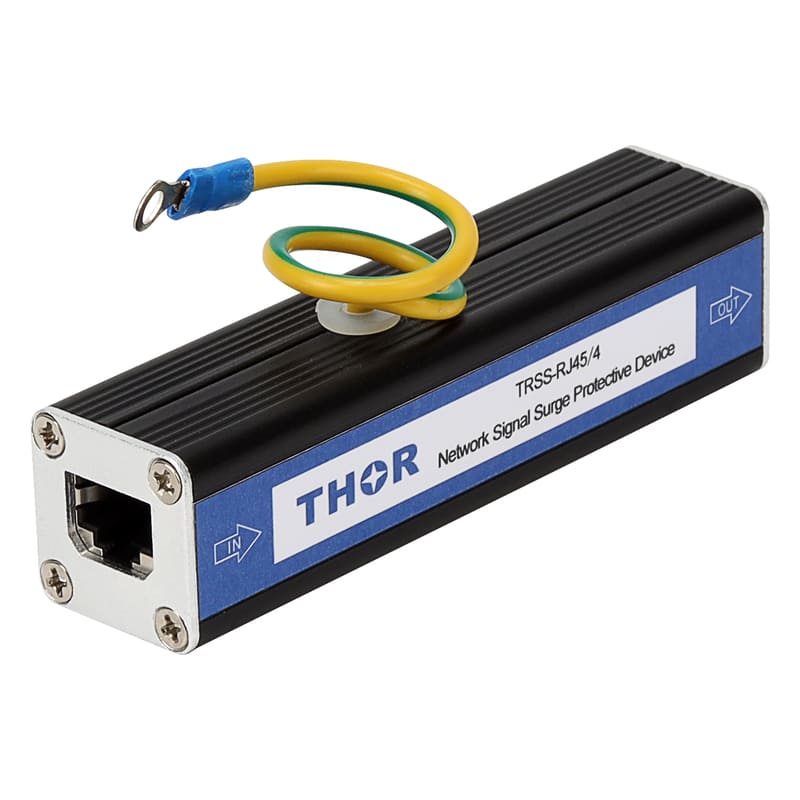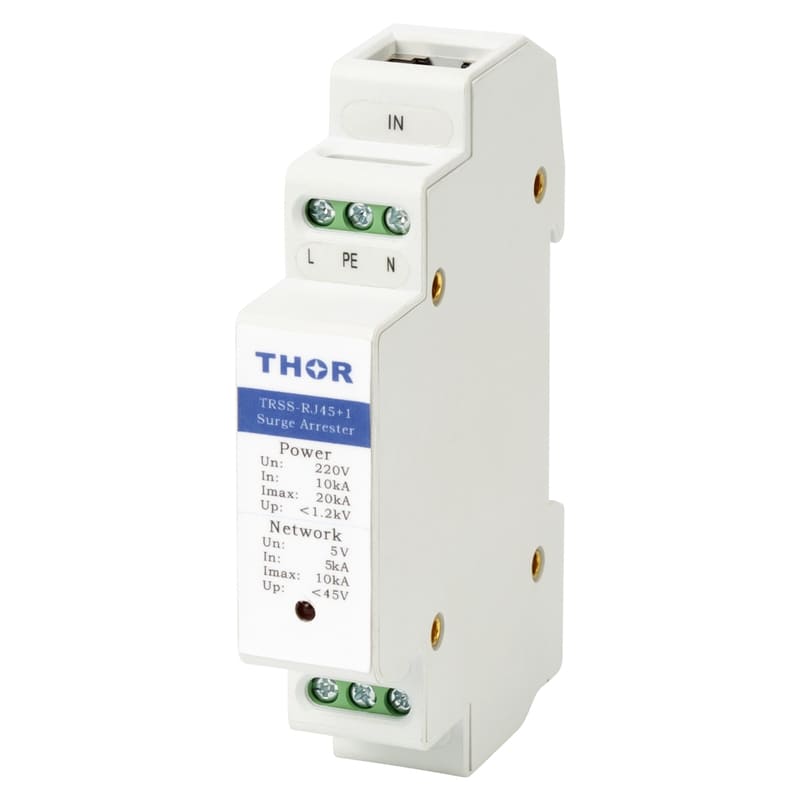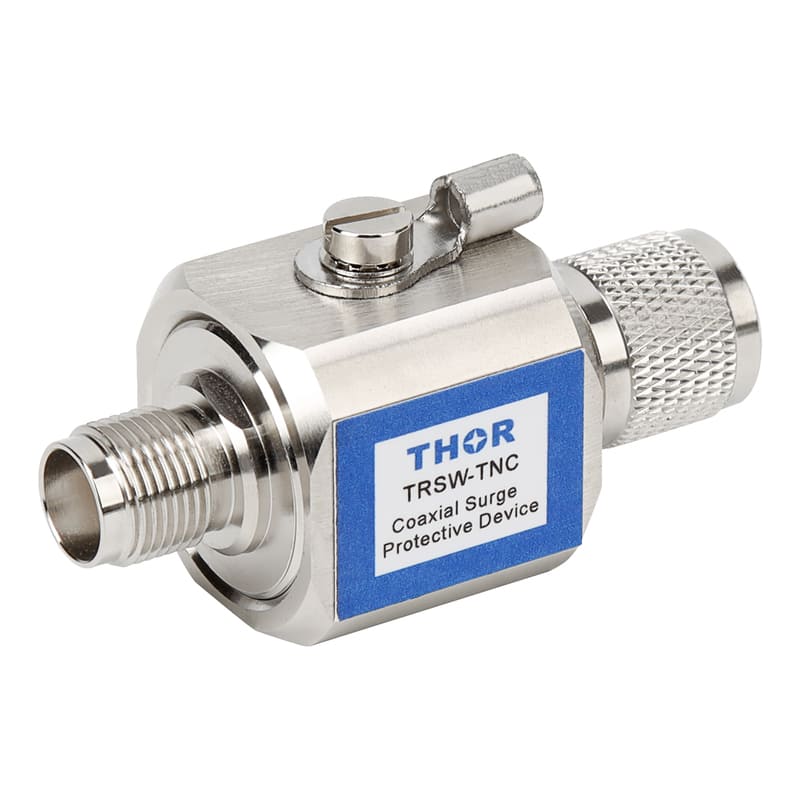
About THOR Surge protection device
Thor is all about protecting against the damaging effects of power transients. It is our goal and mission to connect our customer challenges with high-quality, right-priced solutions and products – completed by unrivaled customer service and technical support.
Incorporated in 2006, Thor Electric Co., Ltd has built everything to offer a wide range of innovative and reliable surge protection solutions and products.
Thor is following the international quality system standards, our SPDs are in line with standards of IEC61643.1. and EN61643.1
All kinds of lightning and surge protection devices 20kA~200kA (8/20μS) and 15kA~50kA (10/350μS) are tested and pass all the requirements based on their classes.
Thor has been designing new products to meet the RoHS directive since 2006. Thor is ongoing commitment to RoHS compliance includes continuing efforts to reduce the presence of hazardous substances in the design and manufacture of a growing number of popular products.
Zhejiang Thor Electric Co., Ltd is committed to meet the requirements of the EU’s Waste Electrical and Electronic Equipment (WEEE) directive. This directive requires producers of electrical and electronic equipment to finance the take-back for reuse or recycling of their products placed on the EU market after 2005.
As a company specialized in the production of surge protection devices, this article will introduce in detail the application of Thor surge protection devices, especially in AC power systems. Before introducing the product, we firstly need to introduce that surge protection devices are mainly divided into the following levels according to their protection capabilities and application situations:
First level (Type 1) protection: The first level surge protection device is mainly used to discharge direct lightning current, or to discharge the huge energy conducted when the power transmission line suffers a direct lightning strike. It is usually set at the incoming end of the user's power distribution system to meet the highest protection standards stipulated by IEC. This level of surge protection device should generally be a three-phase voltage switching power supply lightning protector, and its lightning flux should usually not be less than 60kA.
Second level (Type 2) protection: After the first level lightning protector absorbs a large amount of lightning strike energy, the remaining energy may still cause damage to the equipment, so a second level of lightning protection is required. The second level surge protection device is mainly used to further limit the value of the residual surge voltage passing through the first-level surge protection device. It should be set up at the branch power distribution point of electrical equipment, and its protection capability generally corresponds to the medium protection requirements. When used as the second level of protection, the power supply lightning arrester for the distribution cabinet line output should be a voltage-limiting power supply lightning arrester, and its lightning current capacity should not be less than 20kA.
Third level (Type 3) protection: The third level surge protection device is mainly used to protect more sensitive or important electronic equipment and should be set at the AC power incoming end of electronic information equipment. Its main function is to reduce the value of residual surge voltage to ensure the safe operation of the equipment. As the third level of protection, the surge protection device is generally a series voltage-limiting power supply lightning arrester, and its lightning current capacity cannot be less than 10kA.
Level four and above protection: When the voltage resistance level of the protected equipment is low and the second and third level lightning protection cannot meet the requirements, level four or above protection can be selected based on the actual voltage resistance level of the equipment.
In addition to the above classification methods, surge protection devices can also be divided into Class B, Class C and Class D according to different protection levels and application places. Among of them, Class B surge protection level is the next highest level and is suitable for places with higher-protection requirements for electrical equipments, such as tele-communications rooms, computer centers, etc. Class C surge protection level is suitable for places with average-protection requirements for electrical equipments. Such as homes, offices, etc. Class D surge protection level is the lowest level and is suitable for places with low-protection requirements for electrical equipments, such as general residences, commercial buildings, etc.
Please note that when selecting and using a surge protection device, you need to comprehensively consider factors such as the specific electrical system structures, equipment types, and operating environments, and follow relevant safety standards and regulations. At the same time, in order to ensure the effectiveness and reliability of the surge protection device, regular maintenance and inspections are required.

About Thor Type 1 Surge protection device
Type 1 surge protection devices are usually installed at the entry points of power systems to withstand large currents and high voltages generated by direct lightning strikes. The following are several typical areas where Type 1 surge protection devices are installed:
Building main power distribution system entrance: Type 1 surge protection device is often installed on the main distribution panel of the building as the first line of defense to protect against lightning strikes from the power grid. This protects electrical systems and equipment throughout the buildings from direct lightning strikes.
Power entry cabinet: In large industrial facilities, commercial buildings or data centers, type 1 surge protection devices are often installed in power entry cabinets to protect against possible incoming lightning overvoltages from the external power grid.
Outdoor electrical facilities: For electrical facilities located outdoors, such as lighthouses, billboards, electric doors, etc., since they are more likely to be directly exposed to lightning environments, Type 1 surge protection devices also need to be installed to provide necessary lightning protection.
Power supply lines and grounding systems: Installing type 1 surge protection devices at the connection between power supply lines and grounding systems can release the lightning current safely into the earth and prevent lightning from causing damage to lines and equipments.
It should be noted that the type 1 surge protection device has a large current capacity and low residual voltage, and can withstand high lightning impulse currents and quickly discharge them to the earth. So, to ensure its effective lightning protection performance. You need to ensure that it can withstand the expected lightning impact and properly connected it to other parts of the systems, such as grounding systems, cables, etc.
In addition to installing surge protection devices, comprehensive lightning protection measures also include grounding of buildings, lines and equipments, and installation of lightning rods, etc., to form a complete lightning protection system and improve the overall lightning protection effect.
Finally, it is also crucial to regularly inspect and maintain your surge protection device to ensure it is in good working performance and able to provide effective protection during a lightning strike.
Thor Type 1 Surge protection device:


About Thor Type 2 Surge protection device
Type 2 surge protection devices are usually installed in areas that require a higher level of surge protection. Here are a few typical installation areas:
1. Key parts of the electrical system: such as power distribution rooms, main switchboards or important branch distribution boards. These locations are the core of power supply. Installing type 2 surge protection devices can effectively protect the entire electrical system from surge impact.
2. Areas where electronic equipment is concentrated: such as computer rooms, data centers, communication base stations, etc. These areas concentrate a large number of electronic equipment and have high requirements for the stability of power supply. Installing type 2 surge protection devices can ensure the safe and stable operation of the equipment. .
3. Areas susceptible to lightning strikes: For areas prone to direct lightning strikes or induced lightning strikes, such as those located in lightning-prone areas or on top of buildings or on exterior walls, installing type 2 surge protection devices can significantly reduce lightning damage to electrical systems and equipment. .
4. Power supply lines for important industrial equipment: such as power supply lines for key equipments such as medical equipments, production-line equipments, and elevators. The stable operation of these equipment is crucial to production and safety. Installing type 2 surge protection devices can effectively reduce the risk of electrical surges, failure and loss.
5. Long-distance power transmission lines: Long-distance power transmission lines are easily disturbed by various external factors and generate surges. Installing type 2 surge protection devices on these lines can ensure stable power supply and safe operation of equipment.
It should be noted that when choosing to install a type 2 surge protection device, you need to comprehensively consider factors such as the specific electrical system structure, equipment type, and operating environment, and follow relevant safety standards and regulations. At the same time, in order to ensure the effectiveness and reliability of theSurge protection device, regular maintenance and inspections are required.
Thor Type 2 Surge protection device:

About Thor Type 1+2 Surge protection device
The combined application areas of Type 1+Type 2 surge protection devices are mainly concentrated in places with high lightning protection requirements, especially in environments with high lightning risks. This combination can provide multi-level protection and effectively reduce the impact of lightning on electrical systems and equipment.
The following are several typical application areas:
1. Large buildings: For high-rise buildings, super high-rise buildings, large factories, etc., their electrical systems are complex and there are many devices, so they have higher requirements for lightning protection. In these places, type 1surge protection devices can be installed at the main distribution cabinet or main incoming lines to withstand the large current and high voltage generated by direct lightning strikes. At the same time, type 2 surge protection devices are installed in floor distribution cabinets, terminal boxes and other locations to further limit residual surge voltage and protect sensitive equipment.
2. Data centers and communication base stations: Data centers and communication base stations are key nodes for information storage and transmission, and have extremely high requirements for power stability and equipment safety. In these places, the combined application of type 1+2 surge protection devices can effectively reduce the impact of lightning on power systems and communication equipment, ensuring data integrity and communication continuity.
3. Airports and transportation hubs: Large transportation hub facilities such as airports and train terminals are prone to lightning attacks because they are located in open areas and have dense equipment. In these places, by installing type 1+2 surge protection devices, comprehensive lightning protection can be provided for electrical systems and equipment to ensure the safe operation of transportation facilities.
4. Power supply system: Power supply systems, especially wind power generation systems and smelting systems, are more susceptible to the impact of lightning because they are in harsh natural or working environments. In these systems, type 1surge protection devices can serve as the first line of defense to withstand the direct impact of lightning; while type 2 surge protection devices can further limit surge voltages at the back end to protect the normal operation of power equipment and systems.
It should be noted that when selecting and installing a surge protection device, comprehensive considerations should be made based on factors such as the specific electrical system structures, equipment types, and operating environment, and relevant safety standards and regulations should be followed. Additionally, to ensure the effectiveness and reliability of your surge protection device, regular maintenance and inspections are required.
Thor Type 1+2 Surge protection device:
Above are introduced about Thor surge protection devices according to their different protection capabilities and application situations. If you have any inquiries about the products, please leave messages or contact us via email: info@thorspd.com

